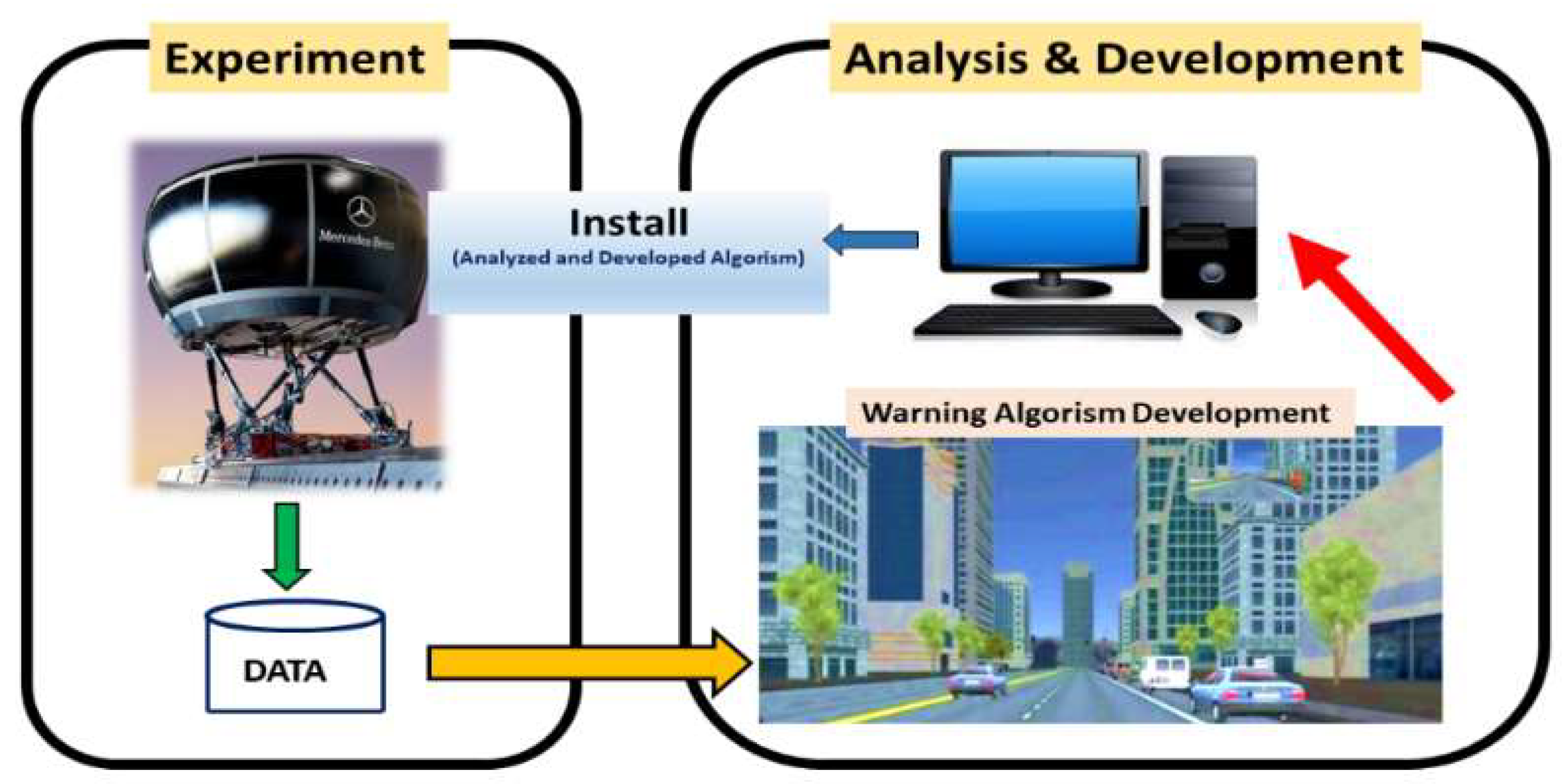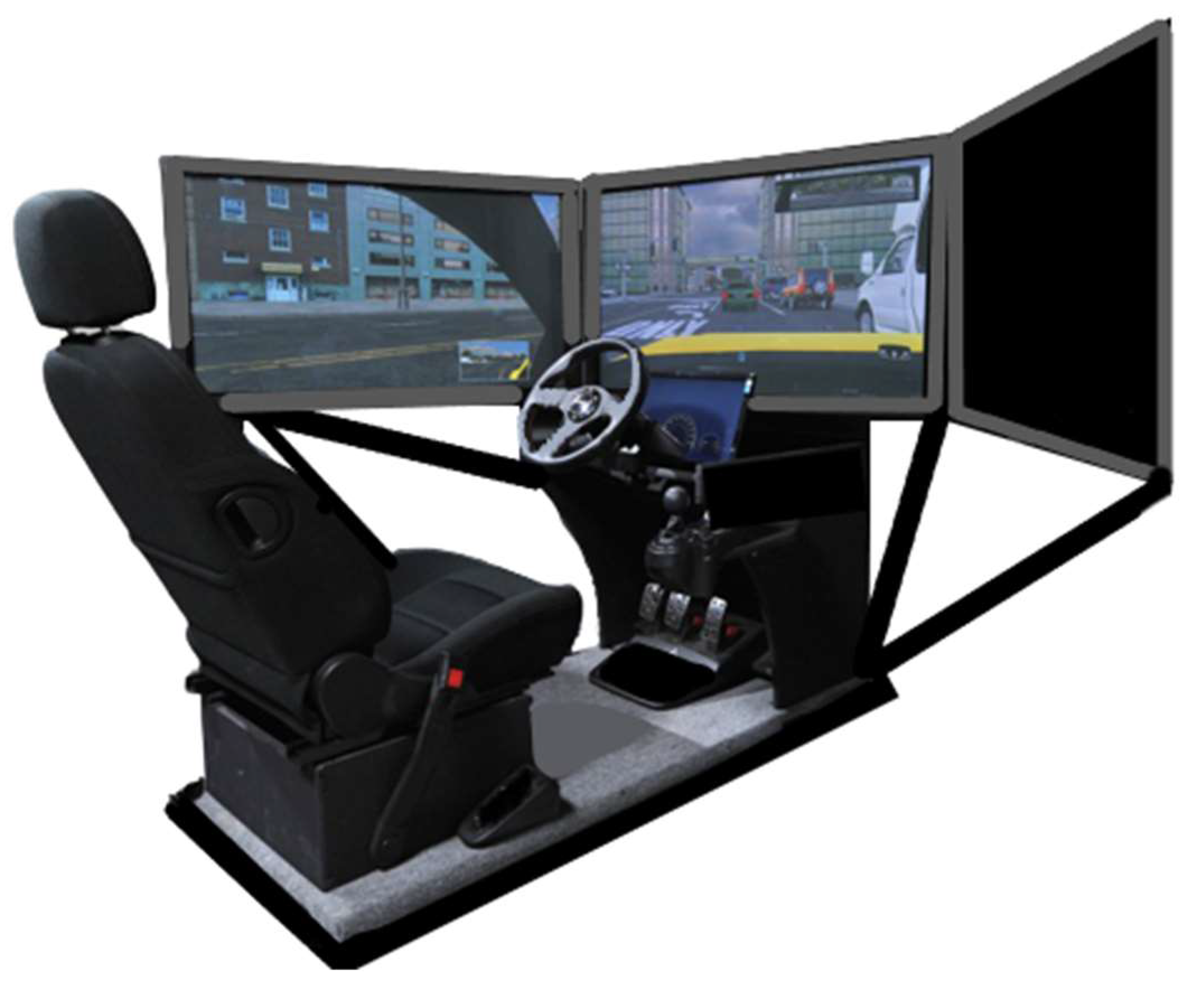Proper traffic safety is defined as systems and techniques used to safeguard road users against dying or being severely injured. Educated and internet-using Bangladeshi drivers took part in a questionnaire about their emotional stability on an online platform with more than 100 questions comprising two parts. While one of the part outlines the physiological, cultural, and socioeconomic factors and driver education, in another part, an 18-point Driver’s Behavior Questionnaire was introduced to the responders. About 40% of the surveyed drivers in the poll were inexperienced. However, 49% of people prefer to ride two-wheelers. Moreover, 70% of surveyed drivers hold valid driver’s licenses. At the same time, 35.2% of those were college graduates. Even 34.8% of accidents were caused by excessive speed and non-aggressive driving. In addition, age and degree of education were significant indicators of distracted driving violations.
- driving simulator
- unusual driving behavior
- road safety
1. Introduction


2. Driving BehavLior of Educated Youth in Bangladesh Considering Physiological, Cultural and Socioeconomic Variablesterature Review
Evans (1996) showed that behavior kept a higher impact intensity than driving activities on highway security [6]. De Winter et al. (2010) demonstrated that the behavioral actions of drivers are a significant impact factor in accidents that happen on highways. The most effective tool for assessing driving habits in the transformational research section is the Driving Behavior Questionnaire [7]. Reason et al. (1990) surveyed 520 United Kingdom drivers to explore the defilements, harmful error, safe lapses, and unusual drivers’ behavior, assisted by the DBQ [8]. Using the DBQ, G. Fancello et al. & F. Wang et al. (2020) experimented in Australia, Laujunen et al. (2004), and Sullman et al. (2002) trialed the DBQ in Sweden, Finland, and New Zealand, respectively, Mesken et al. (2002) investigated in the Netherlands, and Sümer et al. (2002) completed the task in Turkey and Spain. After a while, the research work was again done with the help of the DBQ, Nordfjærn et al. (2014), Mallia et al. (2015), Kaiser et al. (2016), Batool & Carsten (2017), and Muhammad & Jing (2020) inspected the drivers’ unusual behavior [9][10][11][12][13][14][15][16][17]. Coeckelbergh et al. (2002) examined the influence on driving characteristics of occipital cortex deficits and predicted functional fitness [18]. Bella et al. (2005, 2007) revealed that calibrating and validating the driving simulator could be used to develop and test the effectiveness of temporary traffic signals on highways. The driving simulator has the potential to be used as an analyzing tool for the speed on two-lane roads, and the impact of road alignment on motorists was also presented [19][20]. Van Der Horst et al. (2007) inspect the effect of roadside infrastructure on drivers’ rapidity and cross positioning of their vehicles in their driving simulator research. They investigated some methods for inducing qualitatively distinct patterns of subjective response using driving simulators. [21]. Yan et al. (2008) considered if a driving simulator could measure traffic safety at signalized junctions and found a novel method by comparing crash analysis for field data with surrogate safety measures from the simulator [22]. De Winter et al. (2009) developed a theoretical framework to measure driver expertise in work performance, infringements, and mistakes [23]. Francesco Galante (2010) et al. analyzes the speed of cars on a portion of a rural road that intersects a medium-sized town area in 2 different design scenarios, including urban transport management [24]. Maya Abou-Zeid (2011) et al. reviewed university students’ aggressive driving behavior by utilizing a driving simulator to simulate various traffic situations and evaluate drivers’ reactions to those events [25]. A. Calvi (2012) et al. studied the findings of a driving simulator study that looked at performance when entering a divergence region and decelerating during the exiting maneuver [26]. Basacik (2012) et al. looked into how singing while driving impacts driver performance. Their findings show that singing while driving had no noticeable effect on driving performance compared to only listening to music [27]. Dixit (2014) et al. used a controlled virtual reality experiment that studied the personal hazards of driving behavior [28]. Florence Rosey et al. (2014) piloted a comprehensive survey to calculate the effect of a message shown on a variable message sign ahead of an isolated four-way connected, busy road [29]. A. Calvi (2018) set out to find treatments for excessive motoring speed on two-lane country roads and an efficient solution to excessive speed driving [30]. Some frequent issues like driver distraction, chauffer characteristics, and the road environment were synthesized to establish a solution by Panagiotis et al. (2018). These factors have a significant impact on driving attributive errors [31]. Hussain et al. (2019) assessed the physical and objective environment for the driving simulator [32]. Bleydy et al. (2019) employed an intervention mapping technique as a framework to create their simulated driving treatment. They developed a simulator system that increases the need for a driving simulator [33]. Darko et al. (2020) looked at how traffic signaling elements (road markings and traffic signs) impact young drivers’ behavior when driving at night [34].References
- Mathers, C.D.; Boerma, T.; Fat, D.M. Global and regional causes of death. Br. Med. Bull. 2009, 92, 7–32.
- Road_Traffic_Safety. June 2021. Available online: https://en.wikipedia.org/wiki/Road_traffic_safety (accessed on 28 June 2021).
- Jacobs, G.D.; Sayer, I. Road accidents in developing countries. Accid. Anal. Prev. 1983, 15, 337–353.
- Driving Simulator. 28 June 2021. Available online: https://en.wikipedia.org/wiki/Driving_simulator (accessed on 28 June 2021).
- Nagiri, S.; Amano, Y.; Fukui, K.; Doi, S. A Study of a Personally Adaptive Driving Support System Using a Driving Simulator. RD Rev. Toyota CRDL 2004, 39, 24–33.
- Evans, L. The dominant role of driver behavior in traffic safety. Am. J. Public Health 1996, 86, 784–786.
- de Winter, J.C.F.; Dodou, D. The driver behaviour questionnaire as a predictor of accidents: A meta-analysis. J. Saf. Res. 2010, 41, 463–470.
- Reason, J.; Manstead, A.; Stephen, S.; Baxter, J.; Campbell, K. Errors and violations on the roads: A real distinction? Ergonomics 1990, 33, 1315–1332.
- Fancello, G.; Daga, M.; Serra, P.; Fadda, P.; Pau, M.; Arippa, F.; Medda, A. An experimental analysis on driving behaviour for professional bus drivers. Transp. Res. Procedia 2020, 45, 779–786.
- Wang, F.; Zhang, J.; Wang, S.; Li, S.; Hou, W. Analysis of driving behavior based on dynamic changes of personality states. Int. J. Environ. Res. Public Health 2020, 17, 430.
- Lajunen, T.; Parker, D.; Summala, H. The Manchester Driver Behaviour Questionnaire: A cross-cultural study. Accid. Anal. Prev. 2004, 36, 231–238.
- Mesken, J.; Lajunen, T.; Summala, H. Interpersonal violations, speeding violations and their relation to accident involvement in Finland. Ergonomics 2002, 45, 469–483.
- Sullman, M.J.M.; Meadows, M.L.; Pajo, K.B. Aberrant driving behavior s amongst New Zealand truck drivers. Transp. Res. Part F Traffic Psychol. Behav. 2002, 5, 217–232.
- Nordfjærn, T.; Şimşekoǧlu, Ö.S.; Zavareh, M.F.; Hezaveh, A.M.; Mamdoohi, A.R.; Rundmo, T. Road traffic culture and personality traits related to traffic safety in Turkish and Iranian samples. Saf. Sci. 2014, 66, 36–46.
- Mallia, L.; Lazuras, L.; Violani, C.; Lucidi, F. Crash risk and aberrant driving behaviors among bus drivers: The role of personality and attitudes towards traffic safety. Accid. Anal. Prev. 2015, 79, 145–151.
- Kaiser, S.; Furian, G.; Schlembach, C. Aggressive Behaviour in Road Traffic—Findings from Austria. Transp. Res. Procedia 2016, 14, 4384–4392.
- Batool, Z.; Carsten, O. Self-reported dimensions of aberrant behavior s among drivers in Pakistan. Transp. Res. Part F Traffic Psychol. Behav. 2017, 47, 176–186.
- Coechelbergh, T.R.M.; Brouwer, W.H.; Cornelissen, F.W.; van Wolffelaar, P.; Kooijman, A.C. The effect of visual field defects on driving performance: A driving simulator study. Arch. Ophthalmol. 2002, 120, 1509–1516.
- Bella, F. Validation of a driving simulator for work zone design. Transp. Res. Rec. 2005, 1937, 136–144.
- Bella, F. Parameters for evaluation of speed differential: Contribution using driving simulator. Transp. Res. Rec. 2007, 2023, 37–43.
- van der Horst, R.; de Ridder, S. Influence of roadside infrastructure on driving behavior: Driving simulator study. Transp. Res. Rec. 2007, 2018, 36–44.
- Yan, X.; Abdel-Aty, M.; Radwan, E.; Wang, X.; Chilakapati, P. Validating a driving simulator using surrogate safety measures. Accid. Anal. Prev. 2008, 40, 274–288.
- de Winter, J.C.F.; de Groot, S.; Mulder, M.; Wieringa, P.A.; Dankelman, J.; Mulder, J.A. Relationships between driving simulator performance and driving test results. Ergonomics 2009, 52, 137–153.
- Galante, F.; Mauriello, F.; Montella, A.; Pernetti, M.; Aria, M.; D’Ambrosio, A. Traffic calming along rural highways crossing small urban communities: Driving simulator experiment. Accid. Anal. Prev. 2010, 42, 1585–1594.
- Abou-Zeid, M.; Kaysi, I.; Al-naghi, H. Measuring Aggressive Driving Behavior Using a Driving Simulator: An Exploratory Study. In Proceedings of the 3rd International Conference on Road Safety and Simulation, Indianapolis, IN, USA, 14–16 September 2011.
- Calvi, A.; Benedetto, A.; de Blasiis, M.R. A driving simulator study of driver performance on deceleration lanes. Accid. Anal. Prev. 2012, 45, 195–203.
- Basacik, D.; Reed, N.; Robbins, R. Smartphone Use While Driving: A Simulator Study; Published Project Report PPR592; The Transport Research Laboratory: Crowthorne, UK, 2011.
- Dixit, V.; Harrison, G.W.; Rutström, E.E. Estimating the subjective risks of driving simulator accidents. Accid. Anal. Prev. 2014, 62, 63–78.
- Rosey, F.; Auberlet, J.M. Driving simulator configuration impacts drivers’ behavior and control performance: An example with studies of a rural intersection. Transp. Res. Part F Traffic Psychol. Behav. 2014, 27, 99–111.
- Calvi, A. Investigating the effectiveness of perceptual treatments on a crest vertical curve: A driving simulator study. Transp. Res. Part F Traffic Psychol. Behav. 2018, 58, 1074–1086.
- Papantoniou, P.; Yannis, G.; Christofa, E. Which factors lead to driving errors? A structural equation model analysis through a driving simulator experiment. IATSS Res. 2019, 43, 44–50.
- Hussain, Q.; Alhajyaseen, W.K.M.; Pirdavani, A.; Reinolsmann, N.; Brijs, K.; Brijs, T. Speed perception and actual speed in a driving simulator and real-world: A validation study. Transp. Res. Part F Traffic Psychol. Behav. 2019, 62, 637–650.
- Dimech-Betancourt, B.; Ross, P.E.; Ponsford, J.L.; Charlton, J.L.; Stolwyk, R.J. The development of a simulator-based intervention to rehabilitate driving skills in people with acquired brain injury. Disabil. Rehabil. Assist. Technol. 2021, 16, 289–300.
- Babi, D.; Babi, D.; Cajner, H.; Sruk, A.; Fioli, M. Effect of Road Markings and Traffic Signs Presence on Young Driver Stress Level, Eye Movement and Behaviour in Night-Time Conditions: A Driving Simulator Study. Safety 2020, 6, 24.
